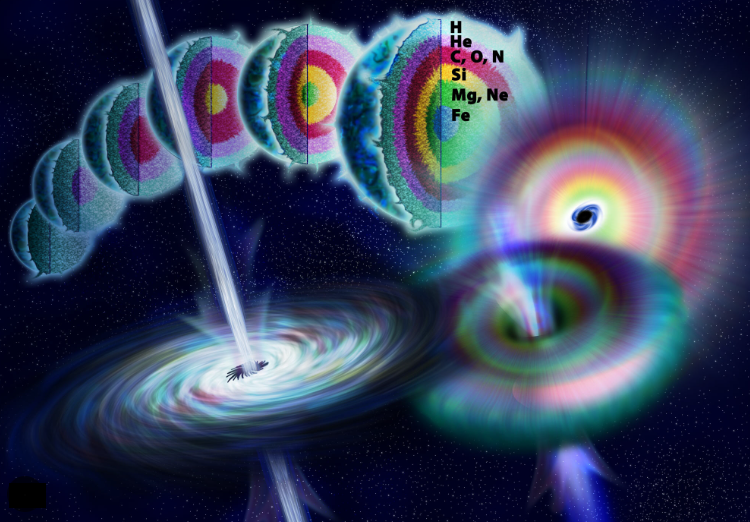
Master
Site: Merate (LC)
Duration
1 year
Tutor
Ghirlanda Giancarlo, Nava Lara, Om Sharan Salafia
Contact
giancarlo.ghirlandaAT inaf.it
Description
Background: Gamma Ray Bursts signpost the death of very massive isolated stars or the merger of binary compact objects (hosting at least a neutron star).
They are produced by the formation of a stellar mass black hole – accretion disk system which powers bipolar relativistic jets.
GRBs are the most luminous transient sources in the universe and are currently detected up to redshift 9.2.
The short gamma ray emission is followed by a long lasting emission shining all over the electromagnetic spectrum, from radio frequencies to tera-electron volts energies.
The jet, launched from the central black hole, should break out piercing through the stellar envelope.
In this phase it is expected to acquire a characteristic structure with more energy and higher relativistic speed material concentrated towards the jet axis.
Depending on the orientation of the jet with respect to the observer, different observational signatures could be ascribed to the jet intrinsic structure.
Recent theoretical studies have investigated how some features of the early X-ray emission detected in GRBs could reveal the jet structure and its orientation. However, a comparison of these models with available observations is still missing.
Scope of the thesis: compare the jet structure models with X-ray observations (publicly available through the Swift satellite data archive) to test them.
The research activity comprises the study and numerical implementation of the semianalytical structured jet models and the collection and analysis of the X-ray data of the XRT instrument onboard Swift with public software for temporal and spectral analysis.
The candidate will acquire expertise in the field of GRBs on both theoretical and observational sides.
The subject of the structure of GRB jets is acquiring more and more interest for its possible implications for the study of forthcoming joint detection of gravitational wave sources and short duration GRBs.
